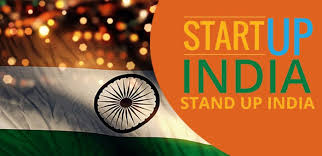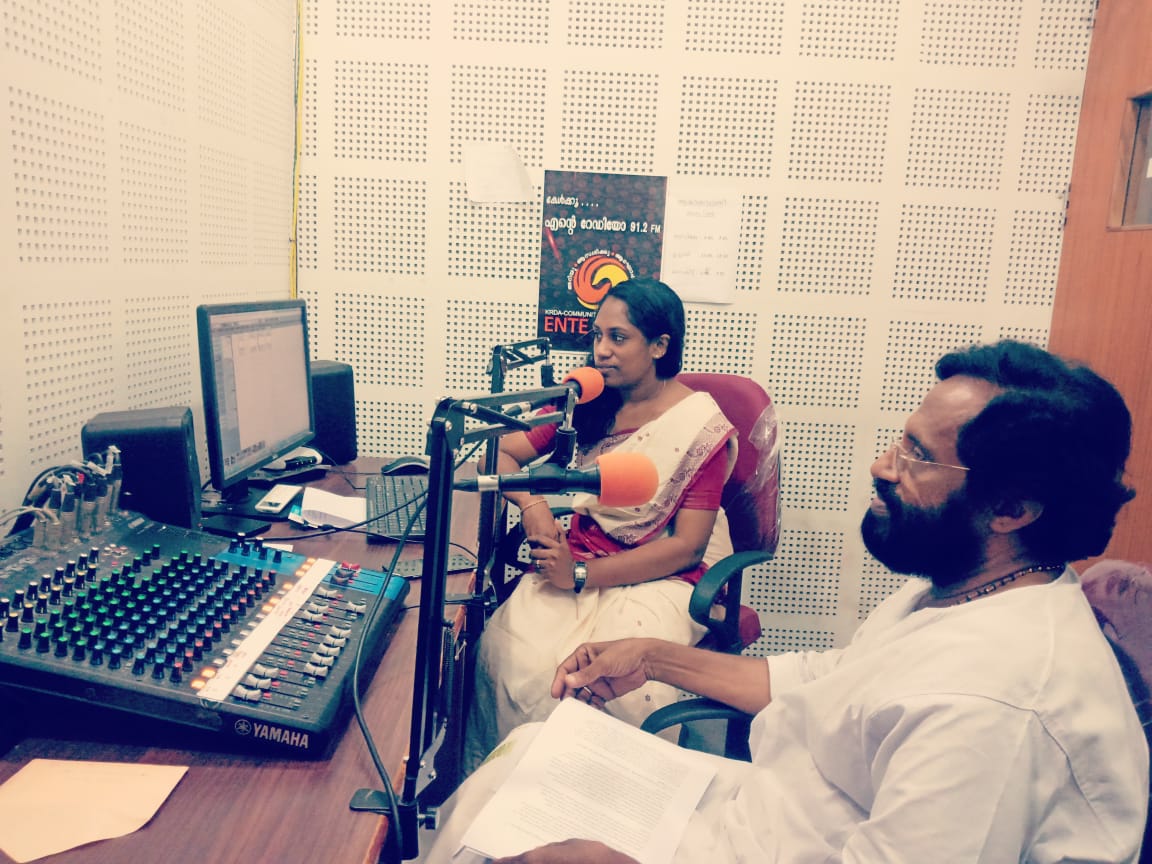START UP AND STAND UP FOR INNOVATION AND ENTREPRENEURSHIP

Dr. Mohan Raj
Do you have an idea?
Do you want to innovate?
Do you think you can use technology in a novel way, and set up an enterprise of your own? You need not despair any longer, as the Government has launched a comprehensive mechanism to help all those wanting to set up their own Start-Ups and not look for jobs endlessly. The Government has received a report prepared by the NITI Aayog “Expert Committee on Innovation and Entrepreneurship” which has made recommendations to operationalise the Atal Innovation Mission (AIM) and the Self-Employment and Talent Utilisation (SETU) programme .
Recognising that creation of jobs and economic growth can’t be achieved only through improving ease of doing business, facilitating Foreign Direct Investment (FDI), promoting Make in India and Skill India programmes, or labour reforms, the Government has responded to the urgent need to encourage people launch their own enterprises, motivated from their own innovative spirit and technological talents. The initiative can not only help people derive greater work-satisfaction and earn a living by themselves, but reduce the burden of creating employment on different sectors of the economy.
The Prime Minister had, in his Independence Day address last year, hinted towards this only by asking people to launch Start-Ups and make India Stand Up as a strong economy. The current year’s Budget has allocated Rs 150 crores for AIM, stating that it wouldpromote a culture of entrepreneurship and innovationin India. In the years to come, the Governmen tbelieved, entrepreneurship and innovation were expected to be even more important sources of growth and job creation. The SETU was conceived as a “Techno-Financial, Incubation and Facilitation Programme” to support all aspects of start-up businesse sand other self- employment activities, particularly in technology-driven areas. The Budget’s provision for SETU is Rs. 1000 crores. The Government is initiating a process to cut rules and regulations for the start-ups.
Constituted to lay down the contours of AIM and SETU, the 15-member NITI Aayog expert committee headed by Prof. Tarun Khanna, Director, South Asia Institute, Harvard University, included entrepreneurs (with track records of building for-profit and social enterprises), financiers, scientists and academics. While studying the existing initiatives aimed at promoting innovation and entrepreneurship in India, and examining experience of countries like China, Chile, Israel and the US, the Committee has made short and medium term recommendations for creation of an innovation and entrepreneur-friendly eco-system.
In making its recommendations, the Committee has gone beyond the existing “entrepreneurial hotspots” of information technology (IT) and e-commerce and has taken note of innovation and creativity that can be encouraged in several other walks of life. The current hotspots have given India much to be proud of (IT revenues are US $150 billion; exports $100 billion; employing 40 lakh directly), but the country cannot rest on these (limited) laurels, the Committee believes. It has pointed out that to create new jobs, India must move beyond its reliance on IT achievements and the industrial conglomerates that droveearlier post-liberalization growth. India needs to develop technological capabilities to serve the requirements of its core industries – capital goods used in manufacturing industries which are mostly imported, as also electronic goods.
Spelling out the areas where entrepreneurship needs to be encouraged, the committee said some sectors immediately provide opportunities for growth. For example, the auto components sector is expected to see substantial growth as India moves from being the world’s seventh largest automobile manufacturer in 2014 to the fourth largest in 2015. Sectors like IT infrastructure, biotechnology, healthcare and education, too are poised to grow several times in size over the next couple of years. There is huge scope in the field of social inclusion. Bringing the economically disenfranchised (including the dalits, scheduled castes, scheduled tribes, and other backward castes) and women into the economic mainstream not only serves a higher purpose, but also gives a strong economic and social justification forthe same. It would lead to greater stability in society in the years to come (a benefit across all socio-economic strata), and would also open up a significant new market for firms to tap.
Government policy that favours innovation can have significant impact on growth and job creation in the economy, as indicated by economists that innovation and productivity are related. Furthermore, India has a latent science and engineering talent pool, which may be particularly advantageous in a context where fewer graduates in Western countries are opting for STEM (Science, Technology, and Engineering Majors) coursework. Indeed, representatives from Google, General Electric, and IBM have noted that conducting world-class Research & Development (R&D) in India is seen as a major opportunity to serve both domestic and international markets. This strength should be capitalised to generate indigenous intellectual capital, the expert committee said.
The committee has said India needed entrepreneurs to create jobs, given its employment crisis. While a substantial portion of post-Independence India’s population consisted of young children, by 2020, as much as 63 per cent of India’s population will be of working age. McKinsey estimates that India’s working-age population will grow by 69 million between 2012 and 2022. Cashing in on this demographic dividend, India will require to create 69 million additional appropriate jobs, as well as jobs for those that are currently unemployed. Estimates indicate that to pursue an inclusive reform agenda, India needs 115 million additional non-farm jobs in the next decade. Creation of new businesses will, therefore, be an important avenue for absorption of these workers.
Making short-term recommendations, the committee says these will expedite the development of anentrepreneurial and innovative culture in India. They consist primarily of measures designed to provide support to early stage startups and to encourage innovation in the manufacturing and rural sector. The agricultural sector remains moribund, the rural economy is neglected, and many sectors are starved of capital and talent. First-time entrepreneurs have difficulty initially due to the lack of mentoring facilities, andtechnical and financial support. This problem is also present in the manufacturing-based Small Medium Enterprises (SMEs) sector and amongst rural enterprises, many of which are focused on traditional arts and crafts and have great export potential.
Various steps can be taken to encourage early stage ventures. This includes encouraging new entrepreneurs through competitions and prizes for innovation, encouraging corporates to fund research and development at the university level, enhancing the scope and efficiency of business incubators, and celebrating and recognizing the importance of entrepreneurs at the national level.
In India’s context, adequate training, mentorship, access to capital and a supportive ecosystem could unleash a rural “startup” boom. Rural youth are also keen on self-employment. A survey conducted on 195 economically backward students revealed that rural youth are also strongly inclined towards entrepreneurship – 87 per cent of respondents from semiurban areas and 68 per cent of respondents fromrural areas expressed interest in self-employment, versus only 17 per cent in urban areas. Early stage ventures suffer from a lack of adequate business incubators which can extend an important role in supporting them. Typically, they provide infrastructural support, a platform for networking, management assistance, and other support services. In India, the concept of business incubation is still at a nascent and experimental stage and focussed on urban areas. Much can be done to strengthen the scale, scope, and efficiency of business incubators.
One area where there is a clear need for support is in mentoring and networking-a survey (commissioned by the committee) conducted on several traditional clusters in India reveals that nearly 50 per cent ofrespondents feel the need to improve formal networking within their sector through associations, and to enhance their ability to work cooperatively with the government. Approximately 60 per cent of respondents stated that access to global markets needed to be strengthened (another area where incubators can help).
Indian incubators have tended to operate as silos. Though they are housed within Universities in some instances, none of them build on meaningful links with the research climate in the universities, neither really benefiting from the research, nor contributing to it.
Nor are the incubators adequately connected to the established corporates, so their identification of needs suffers from inadequate exposure to ‘real world’ problems, and the ability of the incubators to generate roductive insight relevant to existing firmsis rather limited. By investing dramatically in them-not just in the per incubator allocations, but also in the institutional linkages that prevent them from from operating in isolationthe incubators’ can be dramatically upgraded.
Calling for reforms in financing of the start-ups, the committee said access to patient capital is a criticalingredient for startup success. In India, entrepreneurs struggle to obtain funding. Entrepreneurs spend an average of four-to-five times more effort raising funds as their American counterparts. Access to funds is even more constrained for the economically deprived and for women. In a survey conducted on economically backward youth, 97 per cent of respondents stated that access to capital was a barrier to entrepreneurship. In 2012, female entrepreneurs had access to only 27 per cent of needed debt capital from formal lenders, versus a 70 per cent corresponding figure for male entrepreneurs.
Another issue is the lack of funding available at the initial stages. Angel investments (coming from supportive institutions and individuals) in India comprise only 7 per cent of early-stage investing as compared to 75 per cent in the US. Venture Capital funds in India tend to prefer later-stage type funding i.e. companies that are already generating revenues, which would ideally attract PE investments. Sometimes inadequate funding of research and entrepreneurship by government is also an issue. Government-funded research can lead to technological breakthrough.
The Committee has revealed that a substantial set of commercialized innovations have stemmed from the work of publicly funded research institutions and universities in the US. For instance, Google wasbased on an algorithm developed as part of a research project supported by the National Science Foundation. The Internet and the GPS were breakthroughs by teams initially pulled together by the Defence Advanced Research Projects Agency.
The committee wants the use of digital platforms to encourage innovation, reforms in the educational system to encourage creativity and ups killing workers to make them more employable, improving the ease of doing business, and strengthening intellectual property rights. Referring to “cultural” obstacles, the Committee said that young creative individuals are often held back from starting new ventures due to inherent scepticism amongst family members. Given this context, any blueprint that intends to effectively encourage entrepreneurship must promote and embrace a risk-taking and creative mindset.






